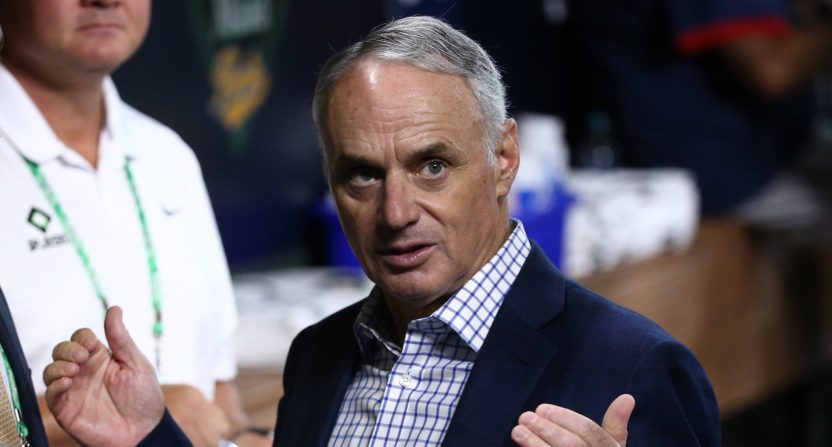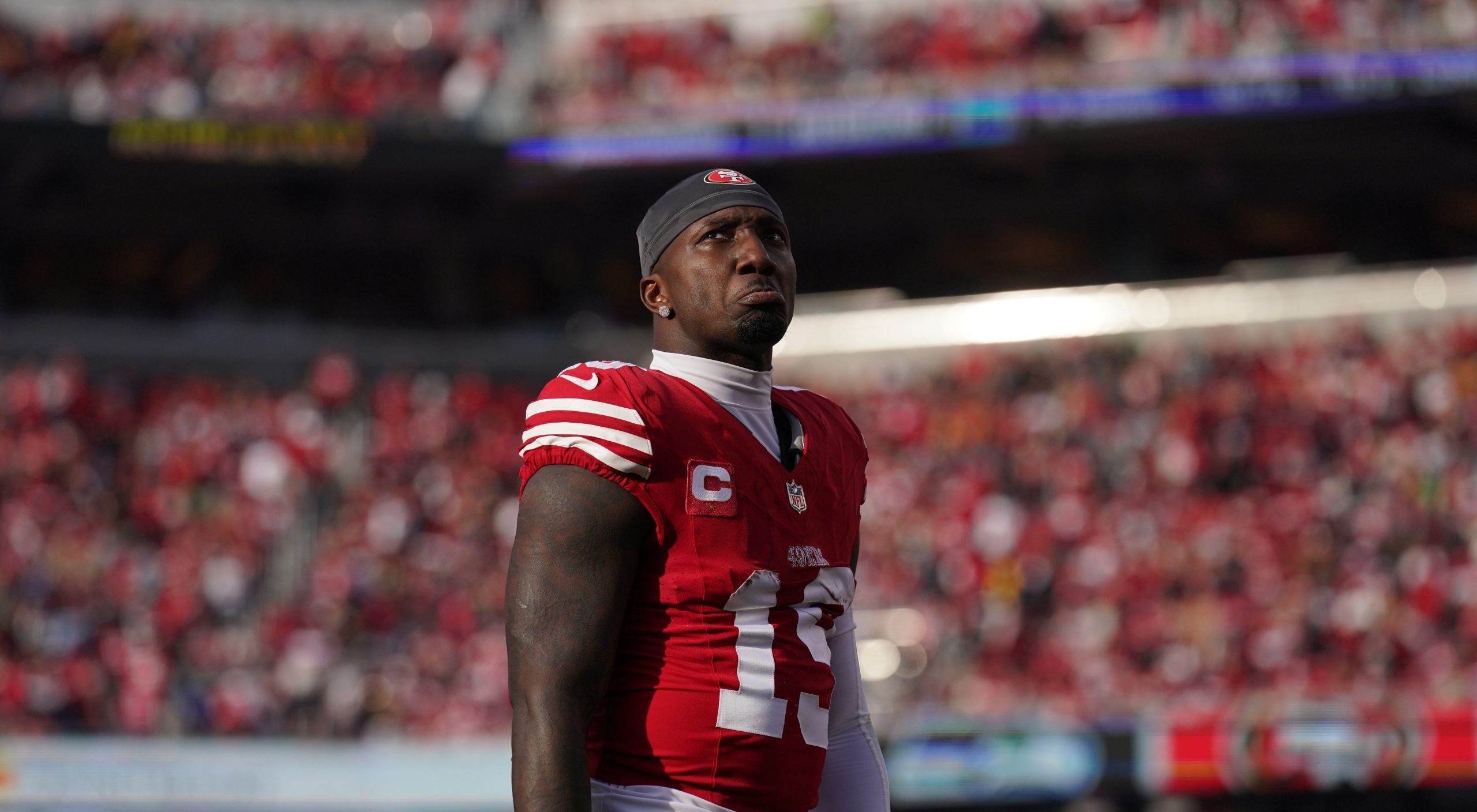The 2024 Major League Baseball season schedule was released on Thursday. One detail that may be overlooked is that the 2024 All-Star Game will be a week later on the calendar than this season. The MLB All-Star Game will take place on July 16, 2024 at Globe Life Field.
Additionally, that likely means the 2024 MLB Draft will be a week later than it was this year; the draft is held at the All-Star venue the weekend before each year’s game.
So, assuming that remains the case, next year’s draft will begin on July 14, 2024.
Ugh, the ASG, and thus the draft, is moved back a week. https://t.co/w1y97QiEYO
— Brad (@ballskwok) July 13, 2023
It seems like day one of the 2024 MLB Draft will begin on Sunday July 14th. That’s so late. Not a fan.
— James Fox (@JamesFox917) July 13, 2023
And with that news, it’s time to make an overdue change to the MLB calendar.
Next season, MLB trade deadline needs to be moved back. At least one week, and ideally two weeks.
The 2023 trade deadline is on Aug. 1, and it’s annually been anywhere from July 30-Aug. 2 (aside from the COVID-shortened season, which featured an Aug. 31 deadline after the season didn’t start until July 23).
Here are some of the reasons why it makes sense to move the MLB trade deadline to sometime in mid-August (let’s say Aug. 15) in future seasons (and especially 2024):
Organizations are focused on the draft until that’s over with
Blockbuster MLB trades before the All-Star break are increasingly rare, in large part because organizations are focused on the draft. A significant amount of front office members and resources are put to use to try to capitalize on the most crucial system-building event in baseball. They want to know every detail and gather every piece of data about hundreds, thousands of amateur baseball prospects. The collective effort it takes to do that in scouting, discussing, and data-diving is enormous.
Ask any MLB executive what they’re focused on entering July, and — along with the on-field results and farm system, of course — they’ll tell you the draft. The trade talks and necessary scouting on each side — both for the buyers interested in MLB talent and the sellers wanting to evaluate many minor-league prospects — usually don’t pick up until after the All-Star break. The draft is a three-day event (so, next year, we can assume it would go into July 16), and then the baseball world is on pause for a few days outside of the All-Star week festivities. MLB games and minor-league games don’t return to action until the Friday after the All-Star Game, which is July 19 next year.
So, if the trade deadline remained in the July 30-Aug. 2 range in 2024, organizations may not even get two full weeks after the All-Star break to have trade discussions, internal discussions, and get extensive scouting — both in terms of in-person scouting and research — of players.
Organizations need more time to decide on buying/selling
Entering the second half of this season, only the NL East appears to not feature a race, with the Atlanta Braves up 8.5 games on the second-place Miami Marlins.
The entire AL East is at least five games over .500, with the Boston Red Sox in last place, nine games behind the first-place Tampa Bay Rays.
The AL Central doesn’t feature a team with a winning record, but the second-place Minnesota Twins are only a half game behind the Cleveland Guardians. Even the Detroit Tigers are only 5.5 games out of first place.
The AL West has the Houston Astros two games back of the Texas Rangers, the Seattle Mariners six games back, and the Los Angeles Angels seven games back.
The NL Central features the Cincinnati Reds in first place and the Milwaukee Brewers one game back, while even the Chicago Cubs (seven games back) are still looking for reasons to not have another selloff.
The NL West has the Arizona Diamondbacks and Los Angeles Dodgers tied for first place, and the San Francisco Giants are only 2.5 games back.
And the biggest thing- the Wild Card races are tightly packed, thanks in large part to the postseason format — introduced last season –featuring three Wild Card slots in each league. Two teams — the New York Yankees and Red Sox — are within two games of an AL Wild Card slot, and two teams — the Philadelphia Phillies and Brewers — are within a half game of an NL Wild Card slot. Only eight teams are more than seven games out of a Wild Card slot.
Many teams truly don’t know if they’re buyers, sellers, or standing pat at the moment, with the trade deadline less than three weeks away. A good or bad week (or two) of baseball could sway things in either direction, and having that extra time to work with could be very beneficial to a number of clubs.
It would lead to teams trying to win deeper into the season
If you move back the trade deadline, you may delay a few firesales (keep in mind: it takes two to make trades happen, so even if a team *wants* to sell early, they may have trouble finding the buyer so soon under a new deadline).
Less full-on selling means a more competitive and watchable product across the league later into the season. That’s good for the sport. And maybe a fringe team plays itself into being a buyer- or at least not a seller.
It may even lead to more impactful trade activity
As alluded to earlier, with the current playoff format, many organizations are in the mix and don’t really know what to do. Even if a front office may prefer to sell in the best interest of the organization’s big picture, it can be bad optics and cause an uproar from the fan base — or locker room — if it happens while the team is hanging in the playoff race. It’s not a great look to be within, say, five games of a playoff spot and essentially give up with two months to go in the season.
With a pushed-back deadline, more separation in the standings will occur, and more front offices will have a definitive view on how aggressive to be as a buyer or seller. There will be fewer organizations feeling stuck in between when the standings paint a clearer picture and with only 6-7 weeks remaining in the season.
It’s easy to see that leading to more blockbuster trades, especially for impending free agents. The rental trade price has been going down for years and rarely involves top-100 prospects; it’s not like moving the deadline back two weeks will torpedo the return value. Many of those trades are made for teams thinking ahead to the postseason — like with a frontline starting pitcher that could be a series-changer — rather than being about simply getting to the postseason.
And two weeks is only going to knock a couple of starts off a starting pitcher’s output compared to if the trade happened on Aug. 1, for example; it’s unlikely to be a dramatic loss in contributions. That’s especially the case when talking a trade for cost-controlled talent that will still make an impact in the following season.
The waiver trade deadline is gone
Ahead of the 2019 season, MLB axed the Aug. 31 deadline that allowed trades through waivers. The waiver trade method served as an additional — albeit much more complicated — way for contending teams to seek talent via after the “non-waiver” (or, traditional) trade deadline.
By moving the current trade deadline back, it would serve as a compromise of sorts to keep trade activity going well into August. And it would lengthen the Hot Stove rumor mill, which is good buzz for a league that can use all of it, especially entering football season.







